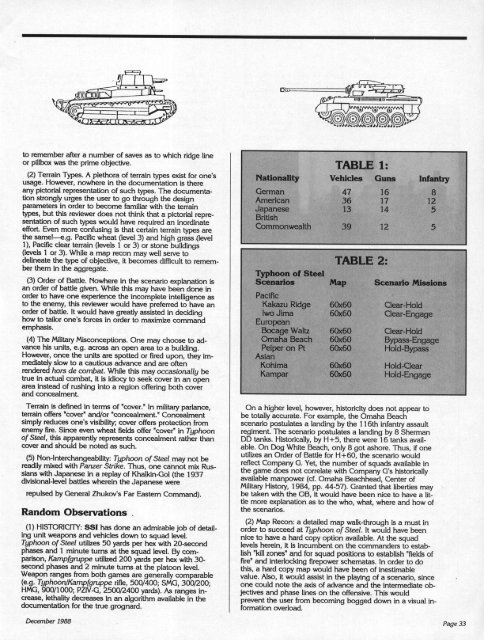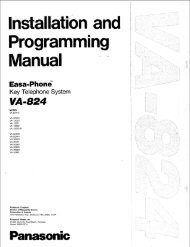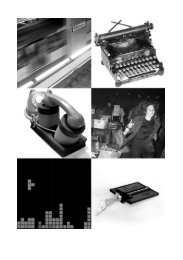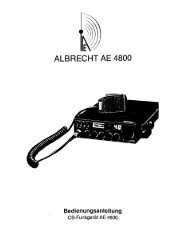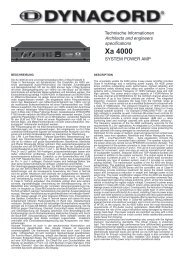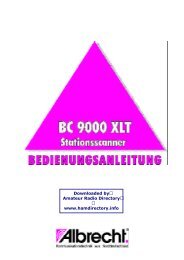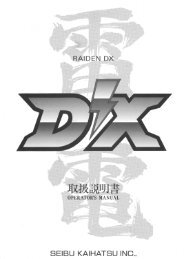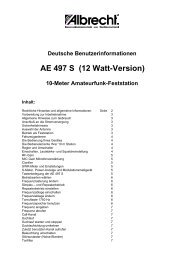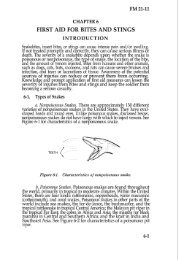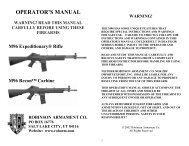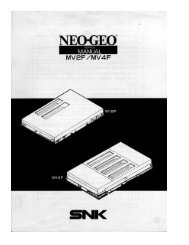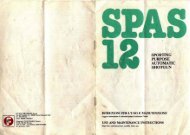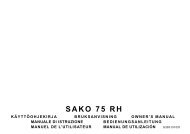Computer Gaming World Issue 54 - TextFiles.com
Computer Gaming World Issue 54 - TextFiles.com
Computer Gaming World Issue 54 - TextFiles.com
Create successful ePaper yourself
Turn your PDF publications into a flip-book with our unique Google optimized e-Paper software.
to remember after a number of saves as to which ridge line<br />
or pillbox was the prime objective.<br />
(2) Terrain Types. A plethora of terrain types exist for one's<br />
usage. However, nowhere in the documentation is there<br />
any pictorial representation of such types. The documentation<br />
strongly urges the user to go through the design<br />
parameters in order to be<strong>com</strong>e familiar with the terrain<br />
types, but this reviewer does not think that a pictorial representation<br />
of such types would have required an inordinate<br />
effort. Even more confusing is that certain terrain types are<br />
the same!—e.g. Pacific wheat (level 3) and high grass {level<br />
1), Pacific clear terrain (levels 1 or 3) or stone buildings<br />
(levels 1 or 3). While a map recon may well serve to<br />
delineate the type of objective, it be<strong>com</strong>es difficult to remember<br />
them in the aggregate.<br />
(3) Order of Battle. Nowhere in the scenario explanation is<br />
an order of battle given. While this may have been done in<br />
order to have one experience the in<strong>com</strong>plete intelligence as<br />
to the enemy, this reviewer would have preferred to have an<br />
order of battle. It would have greatly assisted in deciding<br />
how to tailor one's forces in order to maximize <strong>com</strong>mand<br />
emphasis.<br />
(4) The Military Misconceptions. One may choose to advance<br />
his units, e.g. across an open area to a building.<br />
However, once the units are spotted or fired upon, they immediately<br />
slow to a cautious advance and are often<br />
rendered hors de <strong>com</strong>bat. While this may occasionally be<br />
true in actual <strong>com</strong>bat, it is idiocy to seek cover in an open<br />
area instead of rushing into a region offering both cover<br />
and concealment.<br />
Terrain is defined in terms of "cover." In military parlance,<br />
terrain offers "cover" and/or "concealment." Concealment<br />
simply reduces one's visibility; cover offers protection from<br />
enemy fire. Since even wheat fields offer "cover" in Typhoon<br />
of Steel, this apparently represents concealment rather than<br />
cover and should be noted as such.<br />
(5) Non-Interchangeability: Typhoon of Steel may not be<br />
readily mixed with Panzer Strike. Thus, one cannot mix Russians<br />
with Japanese in a replay of Khalkin-Gol (the 1937<br />
divisional-level battles wherein the Japanese were<br />
repulsed by General Zhukov's Far Eastern Command).<br />
Random Observations .<br />
(1) HISTORICITY: SSI has done an admirable job of detailing<br />
unit weapons and vehicles down to squad level.<br />
Typhoon of Steel utilizes 50 yards per hex with 20-second<br />
phases and 1 minute turns at the squad level. By <strong>com</strong>parison,<br />
Kampfgruppe utilized 200 yards per hex with 30second<br />
phases and 2 minute turns at the platoon level.<br />
Weapon ranges from both games are generally <strong>com</strong>parable<br />
(e.g. Typhoon/Kampfgruppe rifle, 500/400; SMG, 300/200;<br />
HMG, 900/1000; PZIV-G, 2500/2400 yards). As ranges increase,<br />
lethality decreases in an algorithm available in the<br />
documentation for the true grognard.<br />
On a higher level, however, historicity does not appear to<br />
be totally accurate. For example, the Omaha Beach<br />
scenario postulates a landing by the 116th infantry assault<br />
regiment. The scenario postulates a landing by 8 Sherman<br />
DD tanks. Historically, by H +5, there were 16 tanks available.<br />
On Dog White Beach, only 8 got ashore. Thus, if one<br />
utilizes an Order of Battle for H +60, the scenario would<br />
reflect Company G. Yet, the number of squads available in<br />
the game does not correlate with Company G's historically<br />
available manpower (cf. Omaha Beachhead, Center of<br />
Military History, 1984, pp. 44-57). Granted that liberties may<br />
be taken with the OB, it would have been nice to have a little<br />
more explanation as to the who, what, where and how of<br />
the scenarios.<br />
(2) Map Recon: a detailed map walk-through is a must in<br />
order to succeed at Typhoon of Steel. It would have been<br />
nice to have a hard copy option available. At the squad<br />
levels herein, it is incumbent on the <strong>com</strong>manders to establish<br />
"kill zones" and for squad positions to establish "fields of<br />
fire" and interlocking firepower schematas. In order to do<br />
this, a hard copy map would have been of inestimable<br />
value. Also, it would assist in the playing of a scenario, since<br />
one could note the axis of advance and the intermediate objectives<br />
and phase lines on the offensive. This would<br />
prevent the user from be<strong>com</strong>ing bogged down in a visual information<br />
overload.


